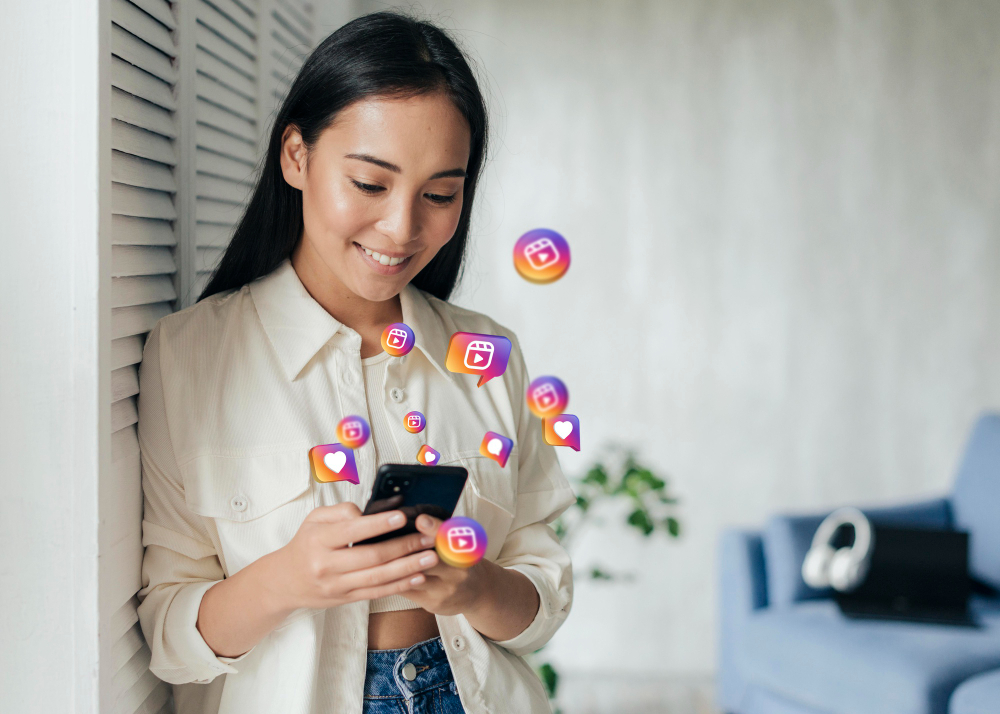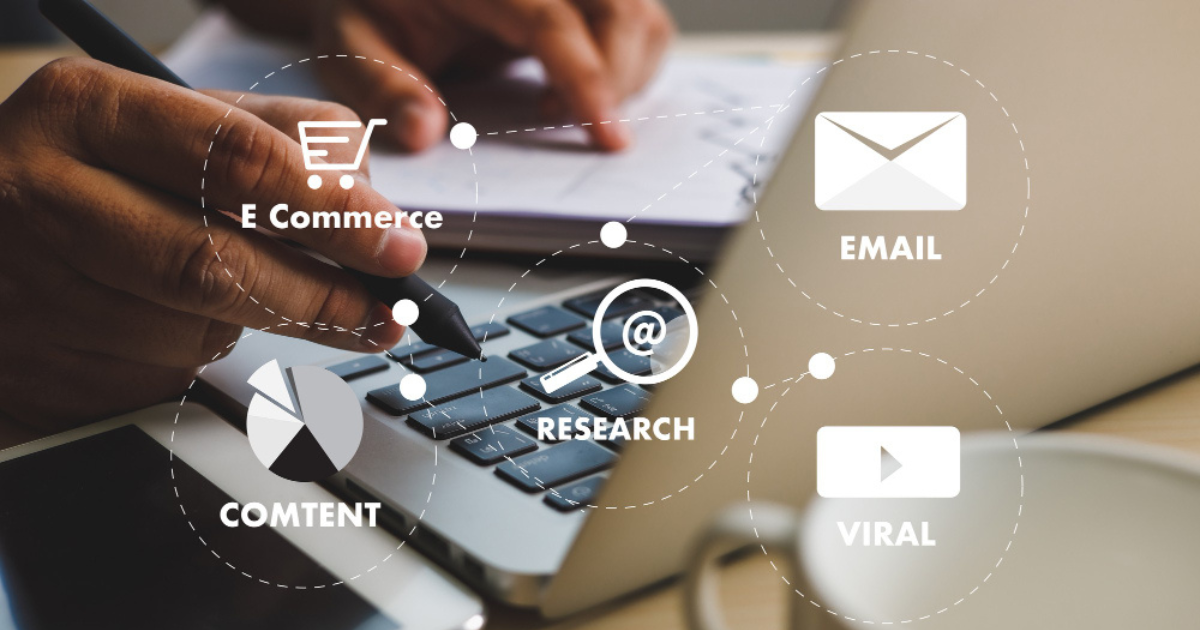
Influencer marketing can solve a variety of problems for brands and businesses. For example, one common problem is reaching a specific target audience. Brands often struggle to reach their desired audience through traditional advertising methods, but influencer marketing can provide a direct connection to that audience through influencers who have already built a loyal following in that niche.
Another common problem is building trust with potential customers. In a world where people are constantly bombarded with advertising, it can be difficult for brands to stand out and establish credibility. However, when an influencer endorses a product or service, their followers are more likely to trust the recommendation because they view the influencer as an expert in that particular niche.
In addition to building trust, influencer marketing can also help to increase brand awareness. By collaborating with influencers who have a large following, brands can quickly and easily reach a wider audience, many of whom may have never heard of the brand before.
Another problem that influencer marketing can solve is creating engaging content. Brands often struggle to create content that resonates with their audience, but influencers have already established a tone and style that their followers are familiar with and engaged by. By partnering with influencers, brands can tap into that creativity and produce content that is both engaging and effective.
Finally, influencer marketing can also help to boost sales. By promoting a product or service through an influencer, brands can see a direct impact on their bottom line. For example, a beauty brand may see a surge in sales of a new lipstick when an influencer shares a tutorial on how to use it.
In today’s digital age, influencer marketing has emerged as a popular and effective way for brands to reach out to their target audiences. With the rise of social media, influencers have become powerful advocates for products and services, leveraging their online presence and engaged followings to promote brands and their offerings.
However, influencer marketing can be a daunting and confusing world to navigate for those who are new to it. That’s why this article aims to provide an overview of what influencer marketing is and how to do it effectively. Whether you’re a brand looking to grow your audience or an influencer seeking to collaborate with companies, this guide has got you covered. So sit back, grab a cup of coffee, and read on to discover the ins and outs of influencer marketing!
Are you ready to learn more about influencer marketing? Keep reading to discover everything you need to know!
When to Use Influencer Marketing

Influencer marketing is a marketing strategy that has been gaining popularity in recent years, particularly among businesses looking to connect with younger consumers. It involves partnering with individuals who have a large following on social media or other platforms and leveraging their influence to promote a brand or product.
There are several scenarios in which influencer marketing can be an effective strategy. For example, if a company is launching a new product or service, partnering with influencers can help to create buzz and generate interest among their followers. Influencer marketing can also be effective for businesses that are looking to reach a specific audience, as influencers often have a niche following.
To use influencer marketing effectively, marketers need to identify the right influencers for their brand. This involves researching potential partners to ensure that they have a large and engaged following and that their audience aligns with the brand’s target demographic. Marketers should also work closely with influencers to develop campaigns that are authentic and align with the influencer’s personal brand.
One reason why marketers use influencer marketing is that it can be more cost-effective than traditional advertising. Instead of spending money on expensive ads or commercials, businesses can partner with influencers to promote their products in a more organic way. Influencer marketing can also be more effective than traditional advertising, as consumers are more likely to trust recommendations from individuals they follow on social media.
Influencer marketing can be a successful strategy for a variety of reasons. For one, influencers have built up a loyal following that trusts and values their opinions. When an influencer promotes a product, their followers are more likely to take notice and consider purchasing it. Additionally, influencer marketing allows businesses to reach a wider audience and generate more buzz around their products or services.
In conclusion, influencer marketing can be an effective strategy for businesses looking to connect with younger consumers and reach a wider audience. By identifying the right influencers and developing authentic campaigns, marketers can leverage the power of influencer marketing to promote their products in a more organic way.
The Advantages and Disadvantages of Influencer Marketing

influencer marketing is a type of marketing where businesses partner with social media influencers to promote their products or services to their audience. This marketing technique has gained a lot of popularity in recent years due to the large following that social media influencers have. While influencer marketing has its advantages, it also has its disadvantages.
Advantages of Influencer Marketing:
Increased Brand Awareness: One of the biggest advantages of influencer marketing is that it can increase brand awareness. Social media influencers have large followings, and when they promote a product or service, their followers become aware of the brand.
For example, on Facebook, businesses can partner with influencers to create sponsored posts or Facebook Live events. The influencer can promote the product or service to their followers, increasing brand awareness.
Targeted Advertising: Influencer marketing allows businesses to reach their target audience. By partnering with an influencer who has a following that aligns with the business’s target audience, the business can reach a group of people who are likely to be interested in their product or service.
For instance, on TikTok, businesses can partner with influencers who create content related to their niche. The influencer can promote the product or service through their content, which can reach their followers who are interested in that niche.
Authenticity: Social media influencers are known for their authenticity, and their followers trust them. When an influencer promotes a product or service, their followers are more likely to trust that recommendation than a traditional advertisement.
On Instagram, businesses can partner with influencers to create sponsored posts or stories. The influencer can share their experience using the product or service, making the promotion more authentic.
Disadvantages of Influencer Marketing:
Cost: Influencer marketing can be expensive. Popular influencers with large followings can charge thousands of dollars per post or campaign, which may not be feasible for small businesses.
Lack of Control: When businesses partner with influencers, they have less control over the content that is created. The influencer may create content that is not aligned with the business’s brand or messaging.
On blogging platforms, businesses can partner with bloggers to create sponsored posts. However, the blogger may write a post that is not in line with the business’s messaging.
False Engagement: Some influencers may use tactics to inflate their engagement rates, such as buying likes or followers. This can lead businesses to partner with influencers who do not have an authentic following.
On other marketing platforms, such as YouTube, businesses can partner with influencers who have high engagement rates. However, the influencer may have bought their followers, leading to false engagement.
In conclusion, influencer marketing has both advantages and disadvantages. It can increase brand awareness, reach a targeted audience, and provide authenticity. However, it can be expensive, lack control, and have false engagement. It’s important for businesses to carefully consider these pros and cons before deciding to invest in influencer marketing.
How to Do Influencer Marketing

Influencer marketing has become an increasingly popular way for businesses to reach their target audience. But with so many influencers out there, it can be overwhelming to know where to start. Here are some successful strategies for how to do influencer marketing that can help you achieve your goals.
Define your goals and target audience
Before you start searching for influencers, it’s important to define your goals and target audience. What do you want to achieve with your influencer marketing campaign? Who is your ideal customer? Once you have a clear understanding of these two things, you can start to search for influencers who align with your goals and target audience.
To do this, you’ll need to conduct some research on your industry and competitors. You can also use social listening tools to track conversations related to your brand and industry. This will help you identify potential influencers who are already talking about your brand or industry.
Build relationships with influencers
Once you’ve identified potential influencers, it’s important to build relationships with them. You can start by following them on social media and engaging with their content. Comment on their posts and share their content with your followers. This will help you get on their radar and show that you’re interested in their work.
You can also reach out to them directly and introduce yourself. Let them know that you’re interested in working with them and explain why you think they would be a good fit for your brand. Be sure to personalize your message and show that you’ve done your research on their work.
Create a mutually beneficial partnership
When working with influencers, it’s important to create a partnership that is mutually beneficial. This means that both you and the influencer should benefit from the collaboration. For example, you could offer the influencer free products or services in exchange for their promotion of your brand. Alternatively, you could pay them for their services.
It’s also important to be clear about what you expect from the influencer. Set specific goals and expectations for the collaboration and make sure the influencer is on board with them. This will help ensure that you get the results you’re looking for.
Track and analyze your results
Finally, it’s important to track and analyze your results. This will help you determine whether your influencer marketing campaign was successful and what you can do to improve it in the future. Use tracking tools to monitor the influencer’s performance and measure the impact of the collaboration on your business. This will help you determine whether you should continue working with the influencer or look for someone else.
In summary, successful influencer marketing requires a clear understanding of your goals and target audience, building relationships with influencers, creating a mutually beneficial partnership, and tracking and analyzing your results. By following these strategies, you can create a successful influencer marketing campaign that helps you reach your target audience and achieve your business goals.
The Bottom Line
In conclusion, Influencer marketing is a type of marketing where businesses collaborate with individuals who have a large following on social media platforms to promote their products or services. These individuals are called “influencers” because they have the ability to influence the purchasing decisions of their followers.
To use influencer marketing, a business can identify relevant influencers in their industry and approach them to collaborate on a campaign. This can involve creating sponsored content, giveaways, or product reviews. The goal is to reach a wider audience and leverage the trust and credibility that the influencer has with their followers.
One advantage of influencer marketing is its potential to reach a highly engaged and targeted audience. Influencers often have a niche following, which means that businesses can target their campaigns to specific demographics or interests. Additionally, influencers have a level of trust and authenticity with their followers, which can lead to higher conversion rates.
However, there are also some disadvantages to influencer marketing. One is the potential for fake followers or engagement. Some influencers may purchase fake followers or engagement to appear more popular than they actually are. This can lead to businesses paying for sponsored content that is not reaching a real audience. Another disadvantage is the cost. Working with influencers can be expensive, especially for larger, more well-known influencers.
Despite these challenges, influencer marketing remains a successful marketing strategy today. This is because it is a highly effective way to reach younger, digitally-savvy audiences who are increasingly difficult to reach through traditional advertising channels. Additionally, influencer marketing has evolved to include more diverse and niche influencers, which means that businesses can find a relevant and authentic voice to promote their products or services.






